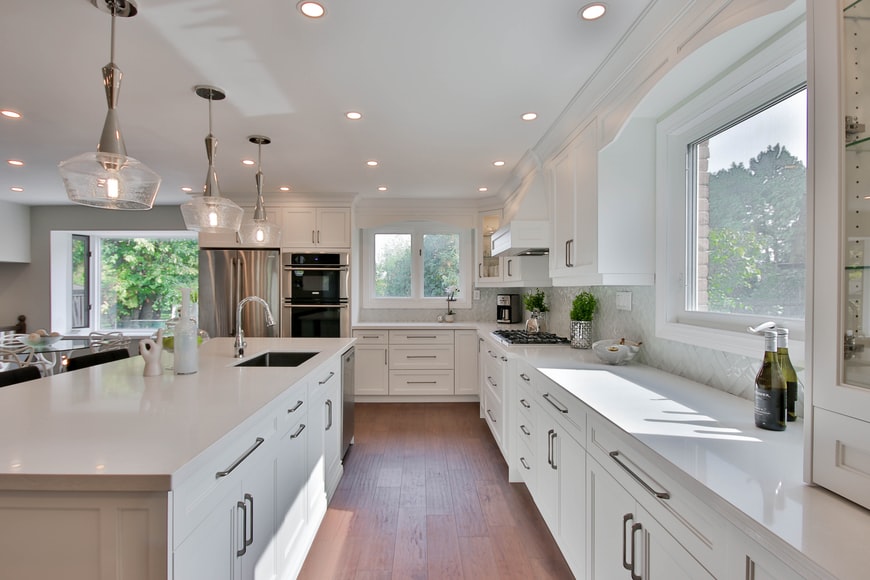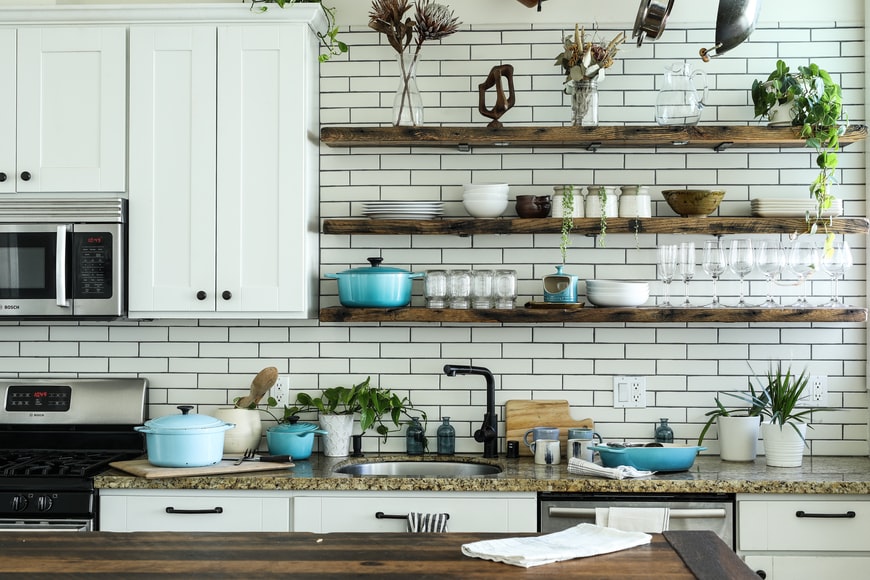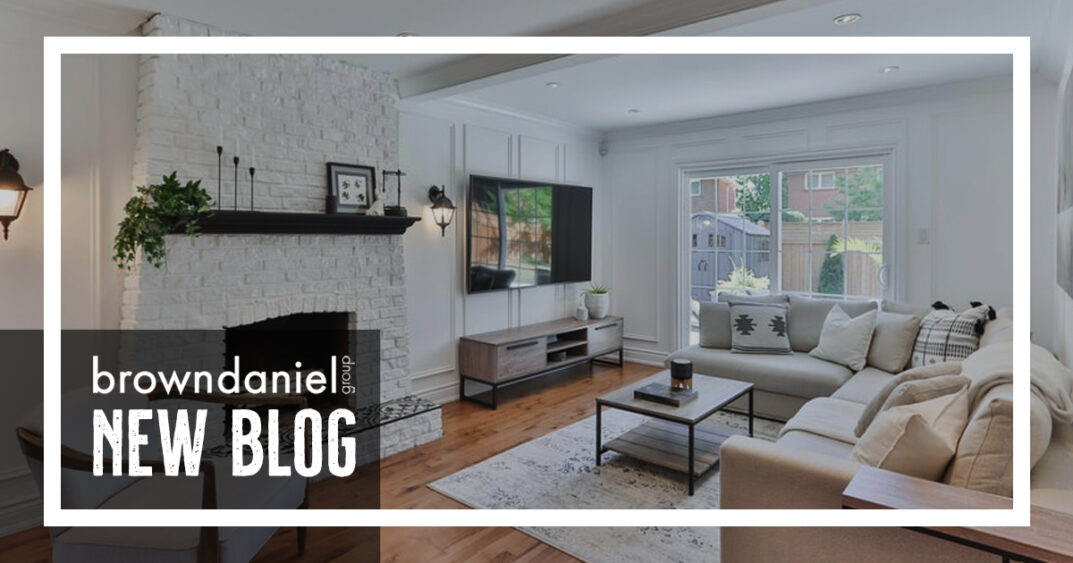
When your home is in need of a refresh, it can be tempting to jump on the newest and most popular design trends. However, not all trends are meant to stand the test of time, and not all popular design crazes will work in all homes. Even professional designers who are touting the latest and greatest in color, textiles and decor will often point out to their clients what changes simply don’t make sense in their homes, or what should best be done in bedroom versus a common room like a the family room or kitchen.
The most important rule of thumb when it comes to designing or redesigning your home is still to choose only pieces and colors that you love. Never try to sell yourself on something simply because it is popular among your friends or seems to appear on all of the current home renovation shows. You’ll be much happier with your home’s decor in the long run if you follow this rule. Here are some of the top current trends that you need to think twice about. Many of these trends will work for some people, in some homes, but they aren’t for everyone and will quickly look out of place in some spaces.
Too Much of a Good Thing
One very popular trend these days is to choose one style for your home and design every room in a uniform manner. Should you instead interrupt your home’s design flow with vastly different styles in each room? No, but it is also not ideal to overdo one theme all throughout your house. One example of this is the current “modern farmhouse” look that has been popularized by many HGTV renovation shows. Rather than renovating every room in your house in the same specific style, instead choose pieces for each room that reflect the style you love while leaving other aspects of each room more neutral. When a trend is overbearing, it seems less authentic and more like it was pulled straight from Pinterest rather than reflecting your specific and individual style.
Over the Top White in the Kitchen

For several years now the words “ALL WHITE KITCHEN” have screamed out at us from real estate listing after real estate listing. You might assume this means an all white kitchen is the most stylish option for your home, but it’s possible to have too much of a good thing. The all white kitchen touted in real estate listings is often meant to be a blank canvas for you to personalize as you wish. Of course leaving the white walls and white cabinets and even countertops is fine, but you need to add a variety of materials and textiles if you are going to do without pops of additional color.
Why might you actually want to avoid decorating with too much white? There are a few reasons actually. A bright white room without visual points of interest can feel cold and more like a doctor’s exam room than a family gathering spot. All white kitchens are also much harder to keep clean. If your cabinets have been painted white, you may unintentionally take some of the paint with you whenever you do a deep cleaning. And if you are a red wine or coffee drinker, you may find yourself constantly scrubbing down your countertops to get rid of minor spills. Also bear in mind that there are many shades that are considered “white,” and they may not all look good against each other. If you are renovating different items in your kitchen at different times, it may be difficult to find the right complimenting shade of white that matches the rest of your kitchen.
Patterned Tile for Floors and Walls
Patterned tiles have become popular recently in bathrooms, kitchens and on backsplashes and even counter tops. If you are tempted to redesign a room using these tiles, first imagine how the room in question may look in 10 years. If you’ve ever spent time in an older relative’s home or a 1970s era AirBnB, you may be able to imagine how dated patterned tile can look when the trend has passed. Of course, the tiles you will see today look nothing like what we saw 40 or 50 years ago, but who’s to say when this current trend will end and the patterns will seem old fashioned?
If you really love this look, experts recommend you save it for an area you don’t mind redoing in a few years if the trend passes and you no longer love the look. For example, there are many varieties of peel and stick tile on the market for backsplashes and kitchen accent walls. This type of tile makes for an easy and inexpensive DIY design project, and is something that is quite easy to remove so that you can apply a solid color tile or paint the area again later.
Faux Marble

Design experts will usually tell you to avoid fake materials, but lately faux marble has been somewhat trendy, especially in the form of kitchen countertops and backsplashes. Many people achieve the marble look using DIY epoxy kits on top of granite or even laminate countertops. After a few hours of painting and several coats of epoxy, you’re left with a reasonably attractive version of a marble countertop or marble backsplash. YouTube is full of amateur DIY tutorials that average people have posted showing the world that anyone can achieve this luxurious look, and you will occasionally even see this method used on home renovation television shows.
However, in spite of the popularity of these kits, we still must caution you to think twice to be sure you really want to take on a DIY faux marble project. Once you have finished applying the epoxy, you have essentially created a painted surface on which to prepare dinners, place hot dishes, and spill food and drink. Epoxy doesn’t clean in the same way as marble, and therefore you may not be as pleased with the way your finished project looks over time as you are in the beginning. Also, the fake stuff just doesn’t have the same patina and warmth as natural stone, and even if you are digging the trend in the moment, once a few years of wear and tear have passed, you will likely be far less pleased than if you had opted for the real thing.
If cost is an issue, there are several wonderful options on the market that will look great in your kitchen, such as granite and ceramic tile that are far more affordable than marble. Granite and tile will also hold up better over time than the epoxy of faux marble, and are easier to keep clean.
Bright Trendy Colors for Furniture

Every year several entities release their “Color of the Year,” from paint companies to media outlets and interior design experts. Some years these colors can be quite bold and eye-catching, and while we definitely encourage you to use these colors in your home, choose how and where to use them wisely. If you paint one accent wall in a room in a bright color similar to Pantone’s Very Peri, a show-stopping purple, you can mute the tone with a more neutral color on your remaining walls. Or you may choose to incorporate Glidden’s Guacamole, a predictably bright green hue, via textiles such as accent pillows or a throw rug.
What we advise against however, is adding these colors into your design palette in the form of expensive furniture that you might not be willing to replace or recover anytime soon. You might think a brightly colored accent chair in a shade reminiscent of the current Color of the Year is a great way to update your home’s look, but how long will you adore a bright green recliner or a glaringly purple couch? These colors are best saved for smaller items that can be easily and inexpensively replaced, or for a wall that can be painted over should you tire of the color.
Open Shelves Are Not for Everyone

Open shelving has become very popular lately, in particular as a way to open up and bring depth to smaller kitchens and those without a lot of natural light. However, it is important for everyone to realize that this trend simply doesn’t work for everyone, and there are a lot of things to take into account before you toss out the cabinet doors and reconfigure your kitchen storage space. The most important thing to consider is whether or not you can keep the items on the shelves tidy enough so that the storage area does not appear messy and unkempt.
Other things you may not have thought about should also be considered before you make a move on this design trend. If you are using open shelving to store rarely used items because you think this will make it easier to maintain neatness, be aware that you will need to dust the items often as they will likely collect dust after they sit for awhile. If you instead choose to use your open shelving for dishes, they will need to be evenly and artfully stacked at all times. This can cause other problems, because when you are constantly restacking and rearranging, you have a much greater rise of dropping and breaking some of your dishes.

